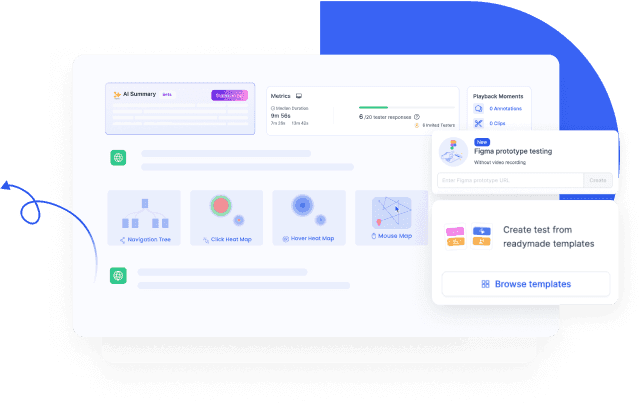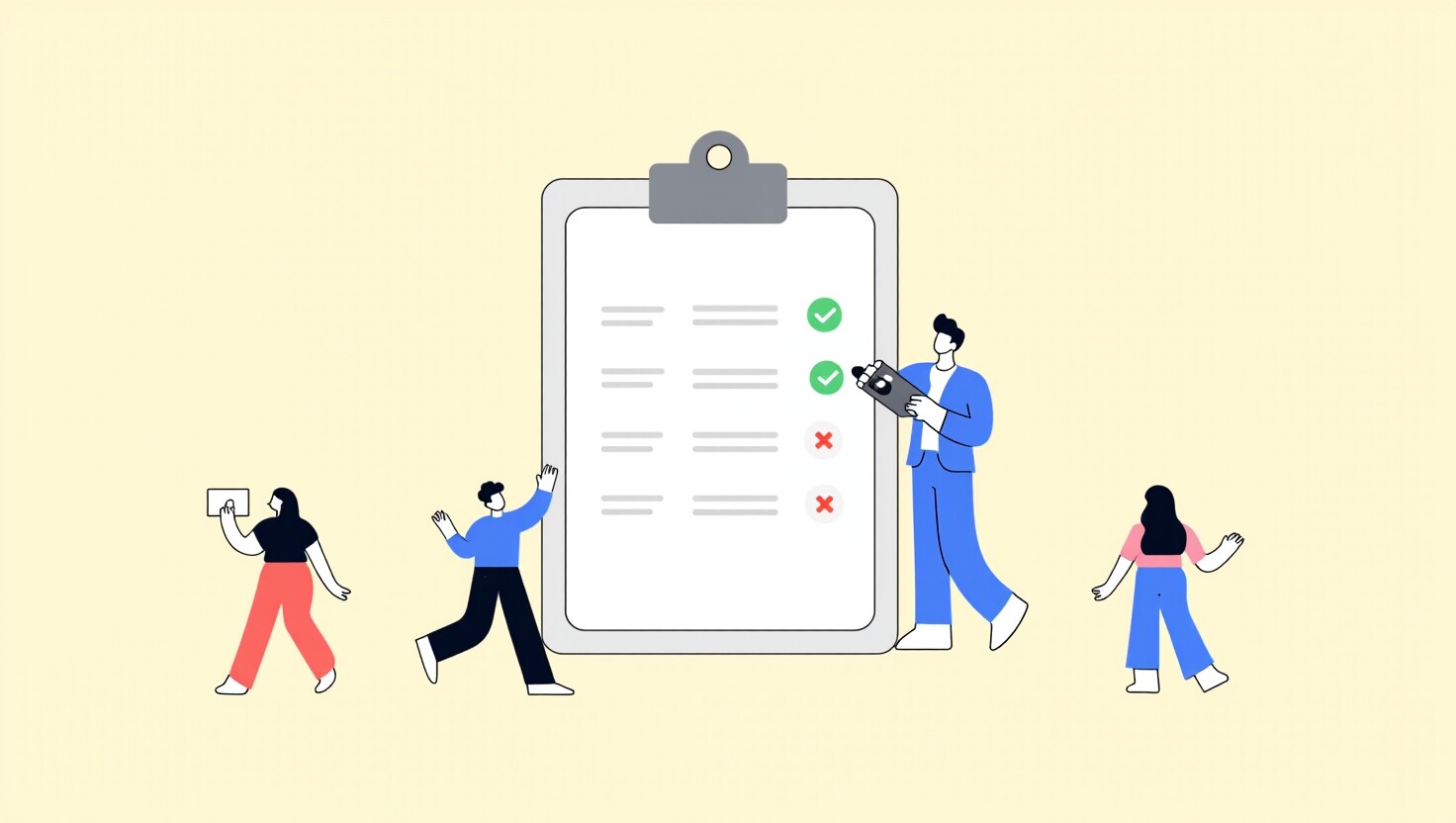Many teams start their design journey confident they understand their users, only to discover later that their assumptions are off base. Frustration sets in as products fail to resonate, often because teams focused on surface-level demographics rather than diving into the motivations, behaviors, and goals that truly drive user decisions.
One way to address this disconnect is by building robust, research-backed user personas—because guesswork isn’t a great design strategy!
User personas go beyond basic statistics to provide a richer understanding of your audience, enabling teams to empathize with users and design products that truly meet their needs. By capturing the why behind user actions—not just the who—personas help teams empathize with their audience and design with intent.
In fact, a research reveals that 82% of companies with well-defined personas report improved value propositions—a testament to their effectiveness in aligning products with user expectations.
In this post, we’ll guide you through creating user personas that aren’t just fictional profiles but powerful tools for making informed, user-centric product decisions.
What is UX Persona and Why do they matter?
A UX persona is a fictional character that represents a specific group of users who might use your product or service. It’s created based on real user research and data and helps you understand your target audience’s needs, motivations, behaviors, and goals.
Why do they matter?
- They uncover the “why” behind user behavior.
- They align teams—designers, developers, marketers—around a shared vision of the user.
- They create better products by putting real users at the center of decisions.
Example Persona
Meet Sasha the Shopper. She’s a 28-year-old urbanite who loves online shopping but gets frustrated with clunky checkouts. Her goal? A seamless purchase experience.
To cater to users like Sasha, e-commerce sites can simplify the checkout process by offering one-click or guest checkout options and ensuring mobile optimization.
Providing personalized product recommendations, transparent shipping information, and multiple payment options can enhance her experience. Usability Testing allows companies to truly gauge and understand the audiences.
As you can see from this example, user personas can be your key to unlocking deeper insights into your users. Ready to craft yours?
Step-by-Step Guide to Designing Actionable User Personas
Creating user personas is a key part of understanding your audience and designing meaningful products. Let’s break down the process into manageable steps to ensure your personas truly represent user needs and behaviors.
Step 1: Start with Data That Matters
The first step in persona development is gathering data. Use a mix of:
- Quantitative data: Look at your analytics to see how users interact with your product. User flows, bounce rates, and session lengths are all helpful insights.
- Qualitative data: Conduct user interviews, surveys, and usability tests. Open-ended questions can uncover deeper motivations and pain points.
Pro Tip: Listen for frustrations and unmet needs. For instance, ask, “What’s the biggest issue you face while placing an order? ” These insights are crucial for building personas that feel human and relatable.
Step 2: Identify Patterns and Segment Users
Once you have data, it’s time to identify patterns. Don’t just focus on general user traits. Segment users based on behaviors, goals, or frustrations. For example:
- “The Frequent Shopper”—a user who regularly shops online, often looks for sales and discounts, and values fast shipping.
- “Quick Task Completers” — They just want to get in, get out, and finish the task as fast as possible.
- “The Eco-Conscious Consumer”—a user who values sustainability, prefers eco-friendly products and is motivated by environmental causes.
Segmenting by behavior helps you create actionable personas that drive product decisions. Start by defining 2–3 core segments, and refine them as your data evolves.
Step 3: Create Detailed, Relatable Persona Profiles
Now it’s time to flesh out your personas. Include key details like:
- Name: Pick a name that captures the essence of your persona (e.g., Alex the Adventurer).
- Goals: What are they trying to achieve with your product or service?
- Frustrations: What challenges or obstacles stand in the way of reaching their goals?
- Quote: A short, direct quote that summarizes their main need (e.g., “I want things to be simple and straightforward.”).
Make sure your personas are visual—use photos, icons, or illustrations to give them a face. A visual persona is much easier for everyone on your team to connect with.
Step 4: Share and Validate Your Personas with the Team
Remember, teamwork makes the dream work! Share your draft personas and get feedback from everyone on the team. The more input you gather, the more effective your personas will be.
Personas are not static—they evolve with new insights and data. Keep revisiting them to make sure they still reflect your user base.
Tips on Using Personas Throughout the UX Process
Personas are more than just descriptions of your users—they should actively guide your design and research decisions. Here’s how to use them effectively throughout the UX process:
- Designing Usability TasksCreate tasks based on what your personas would do. For example, if your persona is “Alex the Analyst,” test how easily Alex can complete specific actions, like filtering data or exporting a report. This helps uncover usability issues early.
- Refining Product FeaturesBefore finalizing features, ask, “Would this work for [persona]?” For instance, if your persona values speed and convenience, prioritize features that make navigation or actions quicker and simpler.
- Testing PrototypesUse personas to evaluate prototypes. During testing, ask participants to imagine themselves as the persona and complete tasks. This helps you see if the design solves their challenges effectively.
- Creating User-Centered SolutionsPersonas help focus on real user needs. For example, designing for a persona who values quick actions can lead to a streamlined checkout process or simpler workflows.
By integrating personas into these stages, you’ll ensure that your product meets user needs and provides a better overall experience.
For example, UXArmy’s usability testing tool allows companies to recruit participants based on persona-specific criteria, such as age, profession, or digital habits. For instance, if a persona highlights a user who values speed and simplicity during online shopping, UXArmy tools can help recruit testers with similar traits. These participants might reveal issues like delays or confusion in the checkout process. By addressing these insights, companies can optimize the experience, reduce abandonment rates, and meet user expectations.
Integrating personas throughout the UX process ensures that every design choice is rooted in real user needs, leading to better engagement and satisfaction!
Ready to build that trust and kickstart your research?
let’s make trust the foundation of every project you work on.

How to Avoid Common Persona Pitfalls
Creating personas is easy, but creating effective ones requires some care. Here’s a checklist of common mistakes to avoid:
1. Too Vague
Personas with overly broad traits that lack specific details come across as too vague.To avoid this, personas should include specific attributes such as age, location, job role, goals, behaviors, and challenges.
Example of a Vague Persona:
- “Young user, tech-savvy.”
Improved Persona:
- “Sasha, a 28-year-old urban professional who values convenience and prefers mobile shopping for quick purchases. She is a marketing manager in a fast-paced startup and often shops on-the-go during her lunch breaks.”
2. Basing Personas on Assumptions
Creating personas based on personal assumptions rather than actual data from users can lead to several half-baked assumptions. Collect and analyze data from real users through surveys, interviews, or analytics to ensure the personas are grounded in reality.
Example of an Assumption-Based Persona:
- “Most users in their 40s are not comfortable with technology.”
Improved Persona:
- “John, a 45-year-old small business owner who enjoys using technology for work, especially for project management and communication. Despite being in his 40s, he regularly uses digital tools like Slack and Zoom for business.”
3. Overcrowding
Creating too many personas that makes it difficult to maintain focus. Limit the number of personas to 3-5 that represent distinct user segments and capture the most important differences in behaviors, goals, and needs.
Example of Too Many Personas:
- “We have 12 personas covering every demographic, including all age ranges, income levels, and user types.”
Improved Approach:
- Focus on 3-5 core personas that reflect the most common and impactful user types. For example:
- Sarah: A 32-year-old working mom looking for family-friendly products.
- Alex: A 26-year-old digital native interested in sustainability and new tech.
4. Not Evolving
Personas often become outdated or irrelevant over time, which can lead to design decisions that no longer serve users’ needs. To avoid this, continuously update personas based on ongoing user research, feedback, and data analytics. Make sure your personas reflect the evolving behaviors and needs of your audience.
Example of a Static Persona:
- “Jane, a 40-year-old business executive who uses our platform for email marketing. Her behavior hasn’t changed in the last 3 years.”
Improved Approach:
- “Jane, a 43-year-old business executive who has shifted from using email marketing to utilizing data analytics and AI-powered tools for personalized campaigns. She now values automation to optimize time and results.”
By following these guidelines and using clear, research-backed, and regularly updated personas, you can ensure that your personas are effective and guide your design decisions successfully.
Tools and Resources to Create Effective Personas
Ready to bring your user personas to life? Here are some powerful tools and resources to help you create insightful and actionable personas:
- HubSpot’s Persona Builder: A user-friendly tool to quickly create and visualize your personas.
- Miro: A collaborative whiteboard tool for brainstorming and mapping out personas with your team.
- Delve.ai Persona Generator: An automated tool to create accurate, data-backed user personas effortlessly.
- Survey Tools: Use tools like SurveyMonkey to gather user data effortlessly.
- UX Guides: Dive deeper with free UX research guides from UXArmy, Nielsen Norman Group or UXPin’s DesignOps Library.
Putting Personas to Work with UXArmy
UX personas are essential for building user-centered products. They guide design, influence product features, and make testing more efficient.










